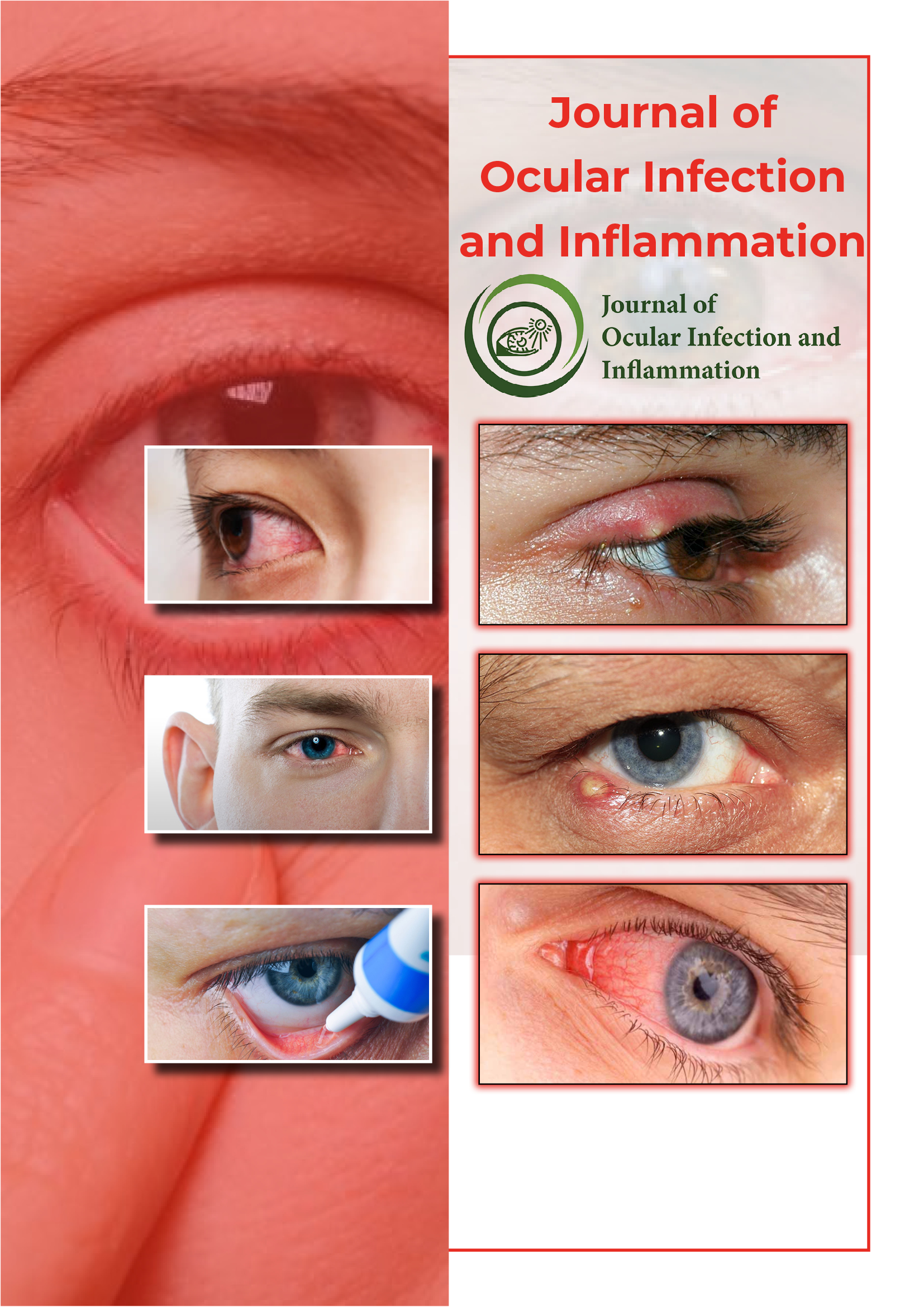Useful Links
Share This Page
Journal Flyer

Open Access Journals
- Agri and Aquaculture
- Biochemistry
- Bioinformatics & Systems Biology
- Business & Management
- Chemistry
- Clinical Sciences
- Engineering
- Food & Nutrition
- General Science
- Genetics & Molecular Biology
- Immunology & Microbiology
- Medical Sciences
- Neuroscience & Psychology
- Nursing & Health Care
- Pharmaceutical Sciences
Opinion Article - (2025) Volume 6, Issue 1
Outbreak of Adenoviral Keratoconjunctivitis in a Rural Eye Camp: Lessons from a Public Health Oversight
Rehan Murtaza*Received: 26-Feb-2025, Manuscript No. JOII-25-29323; Editor assigned: 28-Feb-2025, Pre QC No. JOII-25-29323(PQ); Reviewed: 14-Mar-2025, QC No. JOII-25-29323; Revised: 21-Mar-2025, Manuscript No. JOII-25-29323(R); Published: 28-Mar-2025, DOI: 10.35248/JOII.25.06.134
Description
Adenoviral Keratoconjunctivitis is a highly contagious ocular infection that often presents in clusters, particularly in institutional or communal environments. While typically self-limiting, its potential to cause corneal involvement and long-term visual disturbance warrants serious attention. This article presents an account of a localized adenoviral outbreak following a rural ophthalmic outreach program in Pakistan, illustrating key lapses in infection control and offering insight into containment strategies.
In March 2025, an ophthalmology outreach camp was conducted in a remote district of Punjab, aiming to provide free eye care to over 500 individuals. Services included visual acuity testing, slit-lamp examination, intraocular pressure measurement minor procedures such as chelation removal and foreign body extraction. Within 10 days of the camp, local healthcare centers began reporting multiple patients with acute red eyes, tearing, photophobia decreased visual acuity. Symptoms began in volunteers and gradually spread to patients and their families. Concerned by the rapid escalation, health authorities initiated an epidemiological investigation.
A total of 64 individuals were affected, including 14 healthcare workers, 39 camp attendees 11 household contacts. Clinical features included conjunctival hyperemia, watery discharge, lid swelling, punctate keratitis preauricular lymphadenopathy. Approximately 23 patients developed sub epithelial corneal infiltrates leading to persistent blurred vision. Conjunctival swabs taken from 16 patients were tested via PCR, confirming adenovirus type 8, a serotype commonly associated with epidemic Keratoconjunctivitis.
The investigation revealed several infection control violations. Shared diagnostic instruments like tonometer’s and trial lenses were inadequately sterilized. Disposable eye drop vials were reused slit-lamp surfaces were not disinfected between patients. There was no triaging system to separate symptomatic individuals from healthy patient’s protective eyewear for staff was absent. Moreover, patient education regarding post-camp hygiene was minimal.
Once the outbreak was recognized, containment strategies were swiftly implemented. The local health department temporarily halted eye care camps and initiated mass awareness campaigns through community radio and posters. Symptomatic patients were advised to quarantine at home disinfection protocols were standardized across regional clinics. All reusable ophthalmic equipment was sterilized using high-level disinfectants new protocols requiring single-use items were introduced where feasible.
Management of affected patients included cold compresses, preservative-free artificial tears in cases of corneal infiltrates, mild topical corticosteroids were prescribed under careful supervision. Visual recovery was noted over 4–6 weeks in most patients, though five individuals continued to experience significant glare and reduced contrast sensitivity at three months’ follow-up.
This incident highlights the inherent risk of large-scale eye camps, especially when conducted under constrained conditions without stringent infection control. Adenoviruses are nonenveloped DNA viruses capable of surviving on dry surfaces for extended periods, making them particularly adept at nosocomial transmission. Although the outbreak did not result in severe morbidity or mortality, its impact on community confidence and eye care access was profound.
Rural outreach programs are indispensable in addressing the unmet needs of underprivileged populations, but their success depends on meticulous planning and preventive measures. This outbreak serves as a wake-up call for policymakers and healthcare providers to institutionalize infection control training, ensure supply chains for sterile consumables enforce surveillance mechanisms for early outbreak detection.
While adenoviral Keratoconjunctivitis is often dismissed as a mild self-limiting illness, its capacity to cause community-level outbreaks with lasting ocular morbidity must not be underestimated. Through stringent hygiene practices, adequate staff training public education, similar incidents can be prevented, ensuring that eye care outreach remains a boon and not a burden to the populations it serves.
Citation: Murtaza R (2025) Outbreak of Adenoviral Keratoconjunctivitis in a Rural Eye Camp: Lessons from a Public Health Oversight: A Rare Case Report. J Ocul Infec Inflamm.06:134.
Copyright: © 2025 Murtaza R. This is an open-access article distributed under the terms of the Creative Commons Attribution License, which permits unrestricted use, distribution and reproduction in any medium, provided the original author and source are credited

